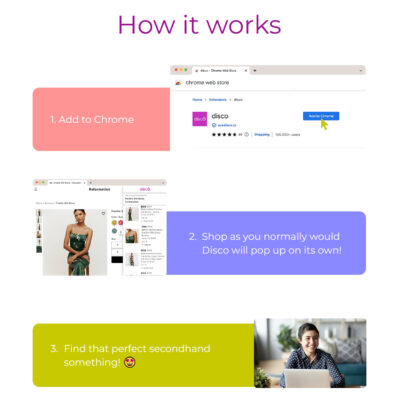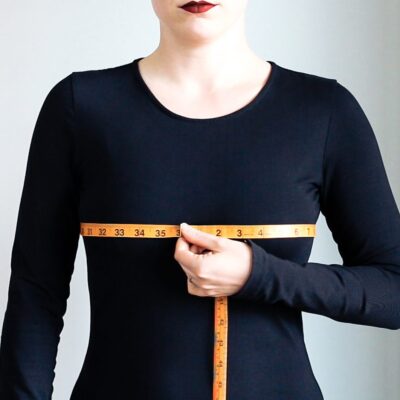Last Updated on January 14, 2023
How many times are you really going to wear that new piece of clothing you’re eyeing? When shopping with Cost Per Wear in mind, that question is front and center. Cost Per Wear is a simple equation that helps you realize that sustainable clothing may not be as expensive as you think it is, if you focus on the bigger picture. Let’s find out how to calculate it and why it could drastically change your shopping behaviors.
Cost Per Wear: The Formula
When calculating the Cost Per Wear (CPW), you are breaking down the upfront price of a clothing item by the number of times you will realistically wear it.
Cost Per Wear ($) = Upfront cost ($) / Times worn (#)
It’s clear that the Cost Per Wear is not an objective indicator and that the CPW of the very same item could differ from person to person, depending on their own style and habits.
Let’s take a $300 coat as an example: If you live in Canada, where winter hits you in the bones and lasts for months, you’re probably reaching out to your coat at least 60 days per year. Now, if we consider that a well-made coat lasts for a minimum of 5 years (and I’m being very conservative), this means you could wear your $300 coat 200 times. The Cost Per Wear of that item would be $1.50 for you.
If you live in California instead, you’d probably wear your $300 coat only a few days per year (unless you’re traveling to Canada), so the CPW of that very same item goes up for you. If you wear the coat 50 times over 5 years, the Cost Per Wear is $6! Doesn’t sound so worth it anymore…
The Cost Per Wear formula allows you to estimate what the real value of a garment is for you, before you buy it. The lower the CPW, the more it’s worth it for you to make that purchase if you really need new clothing. The higher the CPW, the less that item is valuable for you so you should really think twice before buying.
This is one of the pillars of sustainability: “Think before you buy,” and the Cost Per Wear equation is there to make us think indeed.
Is Sustainable Fashion Really More Expensive?
While there are options to buy more consciously without spending a fortune, it’s true that sustainable brands typically have a higher price point than others. There are lots of factors that go into the final price of clothing — think quality of the materials and construction, and living wages — but it’s important not to stop at the price tag.
We’ve learned that the price tag does not reflect the real value an item could have for each one of us. The CPW indicator does, and just because a fast fashion item reports a much lower price on its tag it doesn’t necessarily mean that it will cost you less over time.
In the era of Instagram and TikTok where fashion influencers are never pictured or tagged in the same dress twice, it’s no big surprise that in the UK “one in three young women, the biggest segment of consumers, consider garments worn once or twice to be old,” as reported by The Guardian.
While social media perpetuates a “FOMO” culture, ultra fast fashion brands are not simply bystanders: they play a key role, conscious that introducing users to new products every minute and motivating their desire for the trendiest clothing can lead to expensive habits.
Let us take a practical example and compare a fast fashion outfit that you only plan to wear twice (or may only be able to due to low quality) to a more sustainable outfit that you’re going to take care of and wear for years to come.

Breaking down the Cost Per Wear of both outfits (calculated based on the 30-wears rule for the more sustainable option), the verdict is that the pricey, ethically-made outfit does actually cost you less over time than the fast fashion ensemble. The case is closed.
How Can the Cost Per Wear Be Lowered?
There are a few elements that everyone should pay attention to and look for when you need new clothes and go on a mission to find some that are worth the purchase:
- Quality of the materials, seams, and other components like zippers, buttons, etc; the higher the quality, the longer that item is going to last, the lower the CPW would be
- Style, and especially how that item you’re considering fits with the rest of your closet: if it does not, you’re probably going to struggle styling it and end up not wearing it that much
- Staples vs trends: only focus on buying clothes that you think you’re going to reach for over time as opposed to designs that are trending this season but are likely going to be not-so-cool anymore in just a few months
Needless to say, these rules also apply to second hand shopping if you’re into it. And not only that: the Cost Per Wear concept is a true master key that you can use on different occasions. In fact, you can easily swap out the “Wear” of this equation to replace it with “Use” so that the formula applies to other categories than fashion, like toys or tools.









Leave a Reply